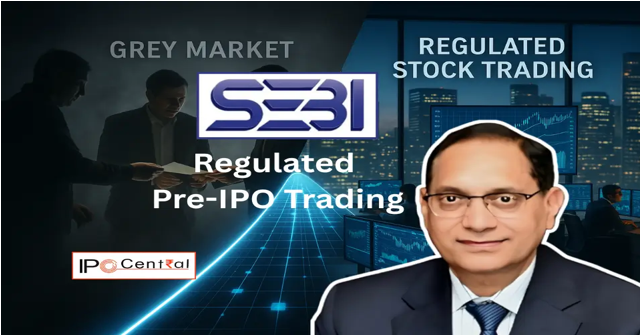"Navigating Turbulence: A Lament on the Unsustainable Trajectory of a Private Equity Deal"
- IBS Times

- Jan 14, 2024
- 3 min read
-By Sai Varun Y
In the intricate landscape of private equity, a prevailing sense of concern is voiced by industry insiders who are increasingly expressing doubts with the phrase, "This cannot persist much longer." The specific private equity deal under scrutiny confronts a set of challenges that appear resistant to resolution, compelling stakeholders to question the viability of its ongoing trajectory. Central to this lament is a nuanced interplay of factors, spanning from market dynamics to internal operational complexities. A significant worry revolves around the prolonged period of uncertainties, posing a test to the resilience of the deal and the patience of those involved.
Market volatility, driven by global economic shifts, regulatory fluctuations, or unexpected events, looms over private equity endeavors. The inability to accurately predict and navigate these external forces intensifies the periods of ambiguity, fostering the belief that the current status quo is unsustainable.
Operational hurdles within portfolio companies exacerbate the situation, be it regulatory obstacles, changing consumer preferences, or internal management challenges. The cumulative impact strains the initial expectations linked to the private equity investment, with the acknowledgment that the current state is increasingly untenable as these challenges persist.
The complexity deepens with financing intricacies, where fluctuating interest rates, evolving debt markets, and liquidity constraints wield significant influence over the deal's financial health. Failure to promptly and effectively address these financial intricacies contributes to the growing realization that the current trajectory may not be sustainable in the long run.
The cyclical nature of industries is an inescapable reality for the private equity community. Economic downturns or industry-specific challenges have the potential to extend the timeline to profitability, prompting stakeholders to question the deal's viability under existing conditions.
Faced with such uncertainty, stakeholders are urged to engage in transparent communication. Recognizing the challenges, evaluating strategic alternatives, and proactively addressing issues become imperative to navigate the turbulence and restore confidence in the deal's future.
While the challenges surrounding the private equity deal are emphasized in the lament, a closer examination unveils a complex array of issues. Market volatility, a recurring theme, originates from diverse external factors such as global economic uncertainties, geopolitical tensions, and evolving trade dynamics. These pressures have fostered an environment where predicting market movements has become increasingly difficult, intensifying the strain on the private equity deal.
Operational intricacies within portfolio companies necessitate meticulous consideration. Regulatory changes, compliance challenges, and unforeseen disruptions in supply chains or customer behavior can profoundly impact the operational efficiency of businesses under the private equity umbrella. Navigating these intricacies demands a dynamic and adaptive approach, sometimes requiring restructuring or revisiting the initial investment thesis. On the financial front, the deal's well-being is intricately linked to the broader economic landscape. Fluctuations in interest rates, tightening credit conditions, and shifts in investor sentiment contribute to the financial complexities that have become evident. The challenge extends beyond managing existing financial pressures to anticipating and proactively addressing potential future risks. The cyclical nature of industries and the influence of global events on specific sectors add further complications to the private equity deal's trajectory. Economic downturns, technological disruptions, or unforeseen market shifts can prolong the timeline to achieve envisioned returns, challenging the resilience of stakeholders.
In response to these challenges, stakeholders must collaborate to seek innovative solutions. This may involve reevaluating the deal's strategy, exploring new market opportunities, or initiating conversations with portfolio company leadership to implement strategic changes. Transparent communication becomes crucial in building trust and aligning all parties toward a shared vision for the future.
As the private equity community grapples with the realization that "this can't go on for much longer," the imperative is not only to identify the issues but also to actively engage in a comprehensive and strategic response. The outcome of this private equity deal hinges on the collective ability to navigate uncertainties, adapt to evolving circumstances, and implement measures ensuring a sustainable path forward.
In conclusion, the private equity deal, marked by its persistent challenges and the lament, stands at a critical crossroads. The recognition that "this can't go on for much longer" serves as a catalyst for change, urging stakeholders to confront the issues head-on. To navigate the complexities ahead, a multifaceted approach is essential. Transparent communication, strategic reassessment, and proactive measures to address market dynamics, operational challenges, and financial intricacies are paramount. The path forward demands resilience and adaptability from all involved parties.
As the private equity community grapples with uncertainty, there is an opportunity for transformation. The journey ahead may require bold decisions, innovative solutions, and collaborative efforts to reshape the trajectory and restore confidence in the deal's long-term viability. In the face of adversity, the lament becomes a call to action—a reminder that challenges, though formidable, can be overcome with strategic foresight and a commitment to finding sustainable solutions. The conclusion of this chapter in the private equity deal's story hinges on the collective efforts to navigate turbulence and forge a path toward enduring success.










Comments